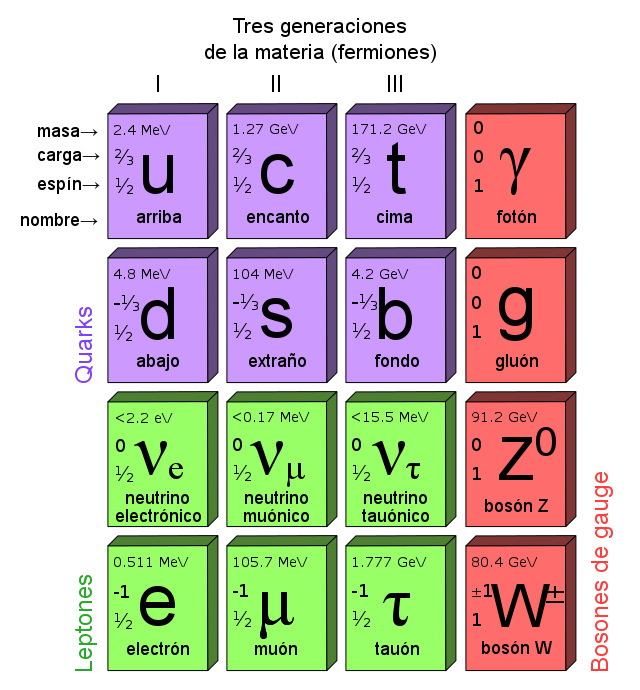Anomalies in flavor physics

We can find different types of particles in the Standard Model. Among them, fermions are the building blocks of matter. Interestingly, and even though we do not know the underlying reasons, there are three copies of each fermion, their mass being the only difference among them. This allows us to classify the Standard Model fermions into three "flavors" or "generations", terms that physicists have coined to refer to each one of the three copies. For example, the electron, a negatively charged fermion which does not participate in the strong interactions, has two heavy brothers: the muon and the tau. The electron mass is about 511 keV, while the muon mass is 106 MeV and the tau mass about 1.8 GeV. The rest of their properties, however, are exactly the same.
Since the only difference between fermions of different generations is their mass, processes in which the mass of the involved particles does not play a relevant role cannot distinguish the different flavors. This fundamental feature of the Standard Model is known as universality. In particular, for the case of the electron, the muon and the tau we usually talk about lepton universality, since these three particles are known as leptons.
In an attempt to explore the limits of the Standard Model, many experiments have spent decades looking for processes that do not respect lepton universality. Until 2014 it stood rather steady, but then the LHCb collaboration, which includes several members of IFIC, announced the observation of an effect that has attracted a great deal of attention in the community. It was the measurement of the observable RK, defined as the ratio between the number of times a B meson decays into a K meson and a pair of muons and the number of times the same meson decays into a K meson and a pair of electrons. According to the Standard Model this ratio must be equal to 1, just like lepton universality predicts: in the absence of a physical property that distinguishes electrons and muons the B meson should not decay preferentially to any of them. However, after analyzing data obtained in the first 5 years of LHC operations, the LHCb collaboration has found a value of RK of 0.745, hence in clear tension with the Standard Model. This discrepancy presently shows a statistical significance of about 2.6 σ.
More recently, in 2015, LHCb published again results which conflicted with lepton universality through their measurement of the R(D*) observable. The value obtained for this observable, also related to B meson decays, disagrees once more with the Standard Model prediction and with lepton universality. Interestingly, this LHCb result points in the same direction as previous measurements performed by the experiments Belle and BaBar, which also obtained for R(D*) a value different from that predicted by the Standard Model.
It is too early to claim that lepton universality is broken. For that aim we would need to accumulate more data and confirm that these effects are not due to spurious statistical fluctuations. However, if these results were confirmed the implications would be far-reaching. A sound confirmation of the violation of lepton universality would be a conclusive evidence that the Standard Model is an incomplete theory, and it would call for an extension with new particles and/or interactions in order to explain the aforementioned observations. In particular, a new Z' boson would be an excellent candidate to explain the anomalous value of RK, whereas a hypothetical leptoquark, or perhaps other electrically charged particles, could account for the anomaly observed in the R(D*) observable. Several researchers at IFIC have recently worked on these exciting alternatives, proposing specific models and exploring possible connections between the breaking of lepton universality and other relevant areas such as neutrino physics, the existence of additional Higgs bosons or dark matter. Could the violation of leptonic universality be our window to a new physics?
“Test of lepton universality using B+ → K+ l+ l– decays”, LHCb Collaboration. Phys.Rev.Lett. 113 (2014) 15, 151601, arXiv:1406.6482
“Measurement of the ratio of branching fractions B(B0 → D*+ τ– ντ) / B(B0 → D*+ μ– νμ)”, LHCb Collaboration. Phys.Rev.Lett. 115 (2015) 111803, arXiv:1506.08614
“Shedding light on the b → s anomalies with a dark sector”, D. Aristizábal Sierra, F. Staub, A. Vicente. Phys.Rev. D92 (2015) 1, 015001, arXiv:1503.06077
“Are the B decay anomalies related to neutrino oscillations?”, S. Boucenna, J. W. F. Valle, A. Vicente. Phys.Lett. B750 (2015) 367, arXiv:1503.07099
“Family nonuniversal Z′ models with protected flavor-changing interactions”, A. Celis, J. Fuentes-Martín, M. Jung, H. Serodio. Phys.Rev. D92 (2015) 1, 015007, arXiv:1505.03079















